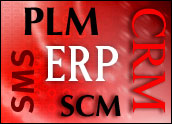
Several foreign CRM companies recently initiated operations in the United States — a sure sign that CRM has reached another maturity milestone. When outsiders begin to penetrate the North American market, it is an indication that the rest of the world “gets it” and has something to offer to the biggest software market on the planet.
I say, “Welcome and good luck,” and offer a few tips on taking your first corporate steps in this market.
True Story
In my career as a software sales rep, I worked at different times for two companies that wanted to enter the U.S. market. One was successful, one not, but despite the different outcomes, there were numerous similarities between the two companies. Most significantly, neither had much of a plan beyond selling its great technologies.
Each company was fueled by adequate cash and a cocksure belief that it had built the Rolls-Royce of its technology space, the last word in performance. One company in particular was so sure it had a winner that the CEO, when I finally met her, told me I was lucky to be working there because the software sold itself. These people were true believers, and they backed up their confidence by refusing to let us Americans see a price list or even train us on the product. “Just sell” seemed to be the motto, to which we responded, after a while of trying, “Sell what?”
Things went from worse to worst, and after six months of futile flailing, the CEO and owner immigrated to these shores and unceremoniously dumped the president. Lots of people and their families from the “home office” followed in their footsteps; presumably, all of them had seen the sacred price list and other top-secret documents, such as manuals.
Miraculously, we sold two systems, but then everything went cold and people started quitting — at least, Americans did. The foreigners who might have been disgruntled found they had one-way tickets. Finally, a new crop of Americans was hired when the owner and CEO decided running a company in “the states” was too hard. To their credit, the owners listened to the new guys and discarded their earlier practices, and the effort finally began to turn around.
Crowded Market
The point of this story is not to embarrass anyone or to say, “I told you so.” But there are several lessons in this tale that any company — foreign or domestic — should consider before entering the CRM market today.
First, the CRM market is crowded. Siebel has about 3,500 customer sites worldwide and roughly 2.4 million seats deployed; other vendors that are still in the business have implemented fewer customers and deployed fewer seats. While many companies still have not yet purchased a CRM solution, many of them are speculating on who the market leaders will be in the future in an effort to make a “safe” choice.
Trying to break into such a situation with a product that pretty much does what the locals do is a very tough act. You can win a few by competing on price, but overall that’s a futile effort.
Performance Is Pass
Second, we are long past the phase when technology alone could sway decision makers. Early in the life cycle of any market, performance is paramount, but as soon as several vendors can demonstrate the same or similar functionality, the debate moves on to another subject.
Unfortunately, one of the big mistakes late entrants make is focusing on performance.
Many times, when a late entrant decides to build a competitive product, the market leader legitimately can be seen as underperforming. At that stage, the leader is often just a little better than the competition — like the one-eyed man in the land of the blind — so the late entrant spends a couple of years fixated on the goal of providing a better-performing product. But would-be leaders should never underestimate markets — they don’t stand still, and by the time the higher-performing product reaches the market on U.S. shores, domestic competition likely will have ensured that a new and better-performing generation of domestic products is on the market.
As the market has moved on, moreover, domestic vendors have improved the usability and reliability of their early products, and the discussion has turned to creature comforts. For example, in today’s CRM market, the discussion is about “customer-centricity,” meaning ease of use, fast ROI and low TCO for the CRM buyer, all combining to enable excellent customer service for the customer’s customer. Performance? It’s a checkbox these days.
Burning Cash
Third, and lastly, it costs a lot of money to enter an established market — just ask SAP. For all of that company’s prowess and success at ERP, supply chain and other back-office systems, its CRM efforts have shown mixed results at best. Whatever market share it has — and that figure is disputed — comes primarily from a combination of giving away CRM as part of a mySAP upgrade to an existing SAP R3 customer or making sweetheart deals of questionable profitability.
As a result of such strategies, SAP isn’t even sure how many active CRM customers it has or how many seats are deployed. The company relies on a survey of “intent to deploy” free upgrades to get a handle on the numbers, and the analyst community then discounts those numbers by 75 percent — not exactly disciplined accounting by either party.
Where Opportunity Is Today
Still, there are plenty of opportunities for new entrants into the CRM market; you just need to know where to look. Generally, that means looking for new niches and business processes. For example, customer feedback applications are just beginning to make an impact, and there are many ways to capture customer input that have not been explored yet. Furthermore, unlike CRM proper, customer feedback applications will generate niches for services providers that can work with these new technologies to send data and information back to vendors.
Also, with the increasing availability of information about customer needs and the growing complexity of interacting with vendors and their CRM systems, there is a dawning need for a class of specialists who can interact with the end customer and the vendor as a go-between. Some thinkers have started calling this “deep support,” and it sounds like a great and growing opportunity for someone with an empty garage. If I were bringing a technology company to the United States, that’s where I’d be.
Denis Pombriant is former vice president and managing director of Aberdeen Group’s CRM practice and founder and managing principal of Beagle Research Group. In 2003, CRM Magazine named Pombriant one of the most influential executives in the CRM industry.























































